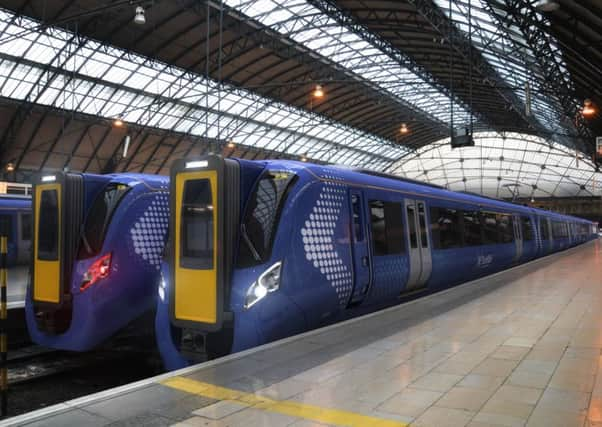Alastair Dalton: ScotRail's new fleet must work from day one


It doesn’t much resemble a train from the outside, but the interior provides the first glimpse of how hundreds of thousands of Scots will travel over the next few decades.
The full-size model is part of one of the carriages of ScotRail’s new fleet of 70 electric trains, which will start operating on some of the country’s busiest routes from the end of next year. Passengers on the main Edinburgh-Glasgow line will be the first to experience the improvement, followed by ten other routes across the Central Belt over the following two years. The trains promise quieter, greener and roomier transport than the diesel-engined trains they will replace on many lines, with their faster acceleration expected to improve punctuality, and, eventually, cut journey times.
Advertisement
Hide AdAdvertisement
Hide AdVisitors to the model at the east end of the station will see the painstaking detail involved in the design.
Several different seats are on display, showing the development process towards providing optimum comfort. My impression from sitting on one briefly was positive, and they seem to provide better lower-back support than those on current trains.
I was also impressed by other details, such as the larger tables which will give everyone sitting round them more space to put things on, like laptops. Legroom also appeared to be marginally greater.
Thought has also gone into things like repositioning power sockets – they are between the seats rather than beneath windows, so users don’t have to reach over each other to plug in.
However, as we all get used to charging our devices on the move, the decision to have only one socket per two seats (although there’s one per seat in first class) may be shortsighted.
A new passenger-counting system will enable travellers to see where the emptiest carriages are on platform display screens, and last-minute boarders will be able to walk all the way through the train to find a seat – longer trains are currently divided in the middle.
All this bodes well for catering for the expected continued surge in train travel – approaching 100 million passengers a year in Scotland – so long as other creature-comfort basics like heating and air conditioning also work. They haven’t always on current trains.
But even more fundamentally, this fleet absolutely must work “out of the box”.
Advertisement
Hide AdAdvertisement
Hide AdPast ScotRail operators have a very poor record here, with all three of the last fleets to be introduced suffering serious teething troubles. Veteran commuters will remember the initial major reliability problems of the current Edinburgh-Glasgow main line trains 16 years ago.
But as recently as 2010, an electric fleet which runs on lines such as Edinburgh-North Berwick also proved unacceptably unreliable and delayed the launch of new services.
Abellio, which took over ScotRail last year, says things will be different, pointing to the exemplary past record of Japanese builders Hitachi, and the fact the latest trains’ testing regime will last more than a year.
That will be crucial this time round, because ScotRail carries far more people than it did during those previous new-train introduction disasters. Commuters on lines which will get the new trains are currently sardined in – just ask any regular travellers to the capital from North Berwick or Stirling. Their patience is wearing thin.